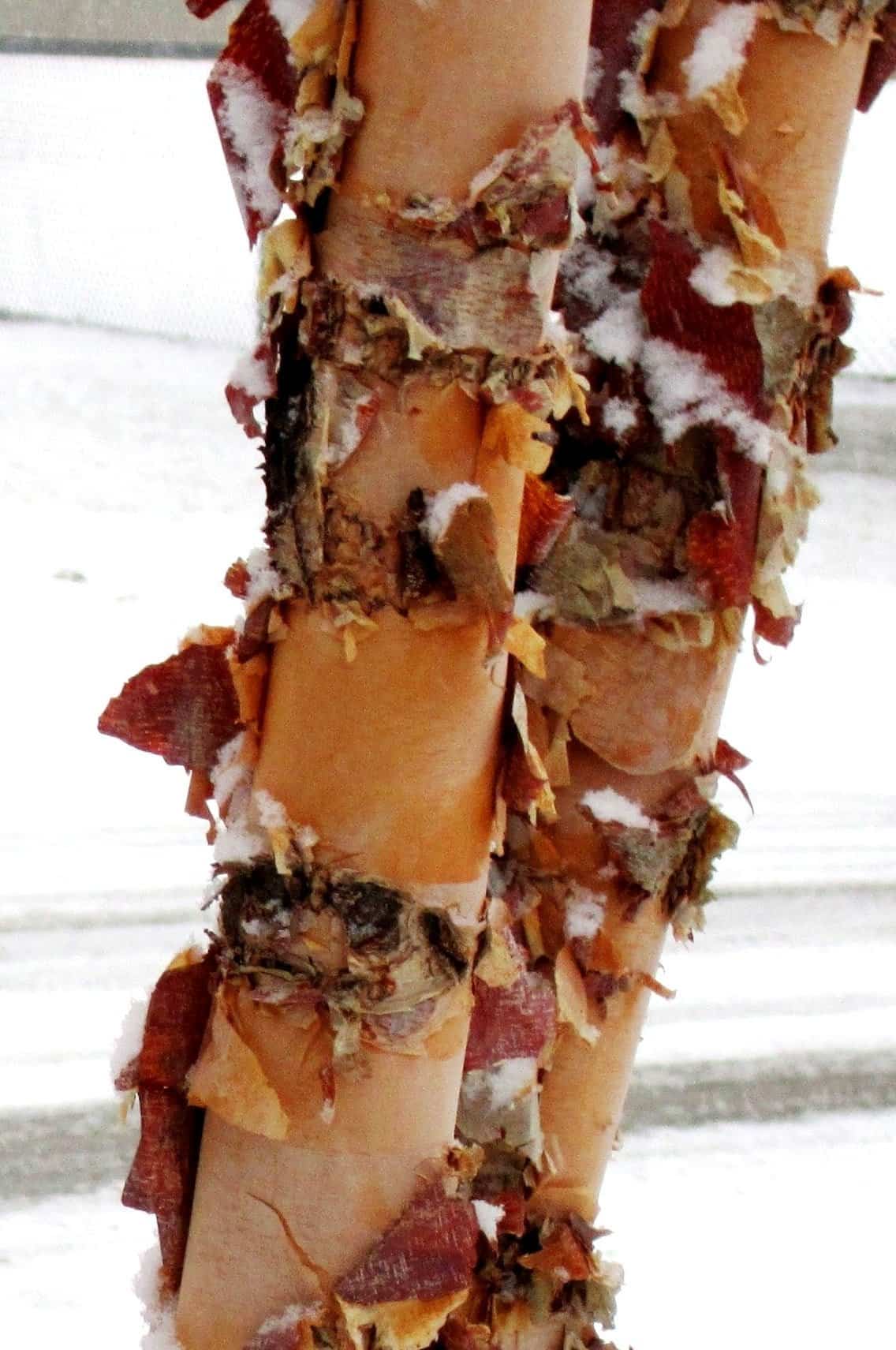
If you’ve received your copy of the winter issue of Garden Making, the Design Issue, have a look at Karen York’s story (“Shadow Magic,” page 80) about the shadows trees cast across snow. A tree’s structure and the frozen whiteness they stand in for much of our northern winter is a special art form. Selecting trees with winter features is important for making a beautiful winter landscape, and fortunately almost every woody plant is enhanced when associated with snow.
I have three trees in my front garden that are spectacular whenever the snow flies. A river birch (Betula nigra, Zone 4) is beautiful when snow catches in the bark curls that cover its full length. This tree has five trunks and makes a stunning winter focal point, with tan to shrimp-pink bark instead of the more common white.
By the front steps is a ‘Vanderwolf’s Pyramid’ limber pine (Pinus flexilis ‘Vanderwolf’s Pyramid’, Zone 5) with long packets of soft needles that catch drifts of snow. This dwarf pine grows to approximately 18 feet (5.5 m) and has an open, see-through structure that supports clematis vines in summer. When snow catches on the needles, the image is so magical it looks like an idealized Disney movie creation. Having it by the front steps is the most visible, pride-of-place location I can give it.
Every kind of beech tree is blessed with slim branches carrying pointed buds in winter that are elegant when outlined with freshly fallen snow. Along the street, I’ve planted a hedge of purple-black beech trees (Fagus sylvatica ‘Riversii’, Zone 5) to act as a windbreak for the front garden. As the predominant northwest wind sweeps in, every branch and bud on the beech hedge is outlined in white, creating an impressive wall of delicate tracery.
This winter, I’ll look more carefully at the shadows on the snow, and consider what other woody plants I can add next spring. Trees and snow are surely the keys to making a beautiful winter garden.
